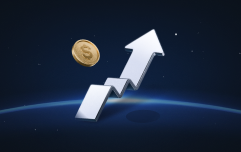SIMFEROPOL, UKRAINE – MARCH 18: Six years on from the day Russian President Vladimir Putin signed a treaty of accession to absorb Crimea in the Russian Federation on March 18, 2020 in Simferopol, Ukraine. Hundreds of pro-Russian and pro-Ukrainian protesters fight outside the regional building as Russian forces without insigna invide Crimea on February 26, 2014 in Simferopol, Ukraine. In a latest statement, the Council of the European Union said: “Since the illegal annexation by the Russian Federation, the human rights situation in the Crimean peninsula has significantly deteriorated. Residents of the peninsula face systematic restrictions of fundamental freedoms, such as freedom of expression, religion or belief and association and the right to peaceful assembly. The increasing militarisation of the peninsula continues to negatively impact the security situation in the Black Sea region. In violation of international humanitarian law, Russian citizenship and conscription in the armed forces of the Russian Federation have been imposed on Crimean residents.”. The UN General Assembly reaffirmed non-recognition of the annexation of Crimea by the Russian Federation. (Photo by Pierre Crom/Getty Images)
Getty Images
On Monday, Ukrainian President Volodymyr Zelenskyy, alongside several European officials, met with President Donald Trump at the White House. During the summit, the group discussed Russia’s ongoing invasion of Ukraine, the need for peace, and methods for ending the war.
Before the session, Trump shared his views about Russia’s war on social media. In his Truth Social post, he stated that Ukraine would not regain control over Russian-controlled Crimea. Conversely, Zelenskyy reaffirmed that Crimea remains an integral part of Ukraine.
What is Crimea, and what is its significance to Russia and Ukraine?
A Brief History of Crimea
Crimea is a diamond-shaped peninsula that is located in southern Ukraine. It is about 10,000 square miles in size, and it borders the Black Sea. For centuries, its residents have used the Black Sea for trade with neighboring groups, such as the Turks.
During the thirteenth century, the Mongol Golden Horde established its presence in the Crimean peninsula. The group frequently engaged in conflicts with local Slavic tribes. The Mongol Golden Horde also established trade relations with various communities on the Black Sea.
By the mid-1400s, this Mongol community evolved into the Crimean Khanate, a group that adopted political, cultural, and religious practices of neighboring Turkic and Muslim communities. The residents of Crimea had adopted Islam as their religion, and they spoke Turkic languages. As this community continued to grow and evolve, it formed a relationship with the Ottoman Empire, another entity that was influenced by Turkic languages and Islam. The residents of Crimea would also come to be known as Crimean Tatars.
The Crimean Khanate would then become a protectorate of the Ottoman Empire, where the two groups frequently engaged in trade. The Ottomans would also offer the Crimean Tatars military and political support in exchange for access to the Black Sea.
Russia’s Claim to Crimea
But by the late 1700s, the Crimean peninsula was under threat. At the time, Russian Empress Catherine II launched a campaign to expand her empire’s borders. On her agenda was access to the Black Sea, which would allow Russian merchant fleets to operate effectively beyond the constraints of the frozen bodies of water near northern and eastern Russia. A presence on the Black Sea would give the Russians access to the Mediterranean Sea via the Turkish Straits, and this would allow the Russians to expand their economic and political influence.
Given Russia’s imperial ambitions and its desire to gain access to trade with Western and Central Europe, the Russian Empire launched an attack on the Ottoman Empire in Crimea. Known as the Russo-Turkish War, the Russians and Ottomans would fight for control over Crimea from 1768 to 1774. The Russians would defeat the Ottomans, and the Crimean Tatars would become politically independent. But Russia’s engagement with Crimea would not end. Following the war with the Ottomans, the Russians continued to meddle in the affairs of the Crimean Tatars as they pushed for access to the Black Sea. The Russian Empire would also crush revolts organized by the Crimean Tatars, which saw Russia gain control over the peninsula. This eventually led to the full annexation of Crimea by the Russian Empire in 1783.
Following the takeover of Crimea, the Russians began to enforce various policies that were unfavorable to the Crimean Tatars. The Russian Empire would begin to relocate ethnic Russians to the peninsula for work. The Russians also built a significant naval presence on the Black Sea, and they created the port city of Sevastopol. Finally, the Russians created Russian-language schools, Russian Orthodox Churches, and other Russian linguistic and cultural elements to spread their influence on the peninsula.
The demographic landscape of Crimea also shifted significantly under Russian rule. According to a Russian census report from 1835, the Crimean Tatars made up over 80% of the peninsula’s inhabitants. By 1897, their proportion had fallen to approximately 36%, reflecting the substantial growth in ethnic Russian and Russian-speaking communities in Crimea.
By this point, the process of Russification in Crimea had deeply entrenched itself. Seeking to consolidate control over the Black Sea region, Soviet leader Joseph Stalin orchestrated the mass deportation of over 200,000 Crimean Tatars in 1944. This forced exile drastically reduced the Tatar presence and accelerated the Russian cultural and linguistic dominance of the peninsula.
Ukraine’s Claim to Crimea
Shortly after these acts by Stalin, Crimea would not remain with Russia much longer. Following the death of Stalin and the emergence of Nikita Khrushchev, the new leader of the Soviet Union, the borders of Russia and Ukraine would change. In 1954, Khrushchev issued a decree where Crimea was legally transferred from the Russian Soviet Republic to the Ukrainian Soviet Republic. It then remained with Soviet Ukraine until the collapse of the Soviet Union in 1991.
Following the demise of the Union of Soviet Socialist Republics, each state in Eastern Europe, the Caucasus, and Central Asia held a vote for independence. Residents in these areas could vote to remain with Russia, the successor of the Soviet Union, or they could vote in favor of establishing a new, independent state.
One of these states was Ukraine. In 1991, the Ukrainians held a referendum on the Act of Declaration of Independence. According to reports, over 92% of voters approved the establishment of an independent Ukrainian state.
A referendum was also held in Crimea. The residents voted in favor of independence, and they expressed that Crimea should remain part of Ukraine.
The Ukrainian Parliament then worked to incorporate the Crimean peninsula into Ukrainian society. Crimea would be granted Autonomous Republic status, and residents on the peninsula would be given representation in Ukrainian government proceedings. In addition, the government of newly independent Ukraine sought to reassure more Crimean Tatars to return to their home. Ukraine implemented a series of acts to protect the “rights of deported people,” and it implemented “programs on social adaption of Crimean Tatars” to help the Tatars reassimilate.
Meanwhile, the Russian Federation opted not to accept the events occurring in Crimea and Ukraine. Instead, the Russians pushed for a different narrative. Russian government officials and ethnic Russians proclaimed that “Crimea was always Russian.” In addition, Russia maintained its presence on the Black Sea by continuing to operate out of Sevastopol.
Russia’s Illegal Occupation of Crimea in 2014
The situation in Crimea then became dire in 2014. After several years of making statements that Crimea should belong to Russia, the Russian Federation took an action that defied the rules and norms of international law. In February 2014, armed soldiers without any insignia appeared in the Crimean peninsula. These armed individuals took over government buildings and other critical areas across the peninsula. The government in Crimea was forcibly dissolved, and a new pro-Russian government was installed.
Following these events, the Russian Federation announced that a referendum would be held in Crimea, where residents would vote to remain with Ukraine or rejoin Russia. On the day of the referendum, international observers noted that trucks full of ballots in favor of Russian integration had been seen several hours before the polling booths had even opened. The Russian Federation would eventually declare that 97% of residents would vote in favor of Russian integration, but the referendum was seen as nothing more than a sham.
Over 100 countries at the United Nations would condemn Russia’s actions in Crimea. Additionally, the majority of UN members publicly stated that they did not acknowledge Russia’s annexation of Crimea, saying that it was an illegal act. Furthermore, the United States, the European Union, and several other countries imposed sanctions on the Russian Federation for illegally annexing the Crimean peninsula. Despite these acts, the Russian Parliament rewrote its constitution to include a clause stating that the Crimean peninsula is part of the Russian Federation. Since then, Russian President Vladimir Putin and other Russian elected officials continue to state that the peninsula is part of Russia.
Putin has also highlighted the importance of the reintegration of Crimea. The Russian president has previously commented that he would like to be remembered in Russian history as one of the greatest rulers of Russia of all time. His imperialist ambitions have also been likened to those of Catherine II, who also acquired the Crimean peninsula. Finally, Putin has authored essays arguing the importance of the Crimean peninsula, as well as his interpretation of Russia’s role in Europe. He has also made it clear that Russia will not relinquish its control over the peninsula.
“The Crimean Region of the [Russian Soviet Federative Socialist Republic] was given to the Ukrainian [Soviet Socialist Republic] in gross violation of legal norms that were in force at the time,” Putin previously claimed in an essay published on the official Russian government website. “Russia was robbed.”
Despite these statements, political leaders and members of the Crimean Tatar community have denounced the 2014 Russian annexation of Crimea. They argue that Crimea is part of Ukraine, and they have documented Russian atrocities occurring within the Crimean peninsula.
“Russia’s history and its narrative are not reflective of our [Crimean] past,” said. Ayla Bakkalli, the Crimean Tatar Representative to the United Nations Permanent Forum on Indigenous Issues. “Putin is stealing the identity of Ukrainians and indigenous peoples through his Russification of Crimea,” she added.
In short, the Crimean peninsula has had a long and complicated history. Many ethnic and linguistic groups have staked their claim to the region, and they have fought over this territory for decades.
Today, Crimea’s place in the world is quite clear. The United Nations, the Crimean Tatars, and Ukrainians continue to condemn Russia’s illegal annexation of Crimea. The Crimean Tatars and Ukrainians have also constantly repeated that they will not capitulate to Russia’s demands, and they will continue to do whatever it takes to help liberate all of Ukraine’s territory from the Russian occupation forces.
No one is certain how the Crimean peninsula will be returned to Ukraine. But as Western leaders continue to meet with Zelenskyy and other leaders from Ukraine, they must be reminded that the voices of Ukrainians and other indigenous voices from Ukraine must be heard.
“We are not going to surrender, and we will not accept any ultimatums,” Zelenskyy said. Russia’s “war began in Crimea, and it will end in Crimea.”
Source: https://www.forbes.com/sites/marktemnycky/2025/08/19/russia-and-ukraine-both-stake-claim-to-crimea/


